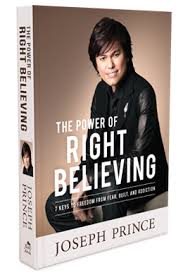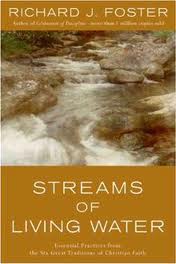
This book is deceptively simple, but the truths are gospel truths and potent. Part three of Joseph Prince’s book is titled “Receive God’s Complete Forgiveness”. Part one was “Believe in God’s love for you” and Part two was “Learn to see what God sees”. These are the ABC’s of the greatest news in the world. Does not seem like anything difficult for anyone to wrap their minds around. However I suspect many find it difficult to believe all these powerful declarations. Human propensity is to achieve God’s forgiveness, acceptance and love by one’s own goodness and effort, not to receive them by faith. Believing and receiving God’s forgiveness and acceptance without any human payment for the debt of sin is too difficult for the rational and self-sufficient person to accept. However, these are truths that the world and even the baptized needs to hear over and over again.
Let me first summarize the chapters in part three:
Receive His forgiveness and reign (chapter 7): Prince underlines the importance of believing in God’s unconditional love and accepting his full forgiveness. He also explains how these coupled with the knowledge of God’s gift of righteousness are able to transform and set free those who feel guilty, condemned, trapped in habits and addictions. It also issues forth in works of love not obligation.
Fresh grace for every failing (chapter 8): Prince opens his life and shares how irritable he can get on occasion. He shows that many problems arise out of a person not dealing with a sense of guilt or condemnation in his life. He points out that grace is not merely empowerment as some claim it to be. Grace is God’s unmerited favour and forgiveness for every failing and it is this confidence in continually receiving God’s forgiveness that enables our lives to be transformed and freed from every addiction, sinful habits and anxieties.
Experience freedom from condemnation (chapter 9): Prince uses the woman caught in adultery as the main passage to demonstrate how God does not condemn us for our sins but rather extends his forgiveness for us all. Jesus was the only one qualified to throw the first stone but instead he forgave the woman. And just as release from condemnation would give the adulterous woman the power to “go and sin no more” so it would be with us. Not only freedom from sin but also the healing of our sicknesses.
Reading this book is similar to reading the first epistle to John. There is a constant repetition and use of spiral to weave the truths into your being. There is constant overlapping of truths and applications and a clear outline may not be easily discernible at times. Do not get riled up, used as we are to western logical deductive thought and order with points and sub-points format.
I like one of his fresh insights on Jesus writing on the ground. What is the most common interpretation of what Jesus wrote on the ground in front of all the religious folks who wanted the adulterous woman stoned? Jesus was writing down the specific sins of the angry mob. Some say with their names too! Well Prince saw an interesting twist. He said Jesus wrote on the stony ground, stood up and stooped down to write again. What was he writing? He wrote on the stone ground the 10 commandments. What does this remind you of? Of God, who wrote the 10 commandments on the stone tablets twice – the second time after Moses broke the first set in anger at the sins of the people. Jesus was in effect saying to those with eyes to see, I am the Word made flesh.
Joseph Prince believes that “the root cause of many sinful habits, fears and addictions can be traced to condemnation. I want to talk to you today about going after condemnation as the root to help you receive god’s forgiveness in those areas so that you can break out of your cycle of defeat and step into a new cycle of victory”(Prince, 106). There have been others root causes put up by other Bible teachers. Those in deliverance work will point to rejection as the root cause. Those in inner healing would point to the dysfunctional relationship to the father. Without wanting to split hairs, it seems to me that theologically the root cause should be unbelief. Condemnation is one of the consequences of our unbelief. Our ancestors Adam and Eve were deceived by Satan to believe wrongly that God did not intend good for them when He forbade them from eating from the tree of knowledge of good and evil. The whole process of redemption on the human side would then require the power of right believing. That’s why the cardinal essential for salvation and transformation and effective ministry has to be: by grace through faith (Ephesians 2: 8). However the disagreement here is major.
I hope some people are taking the opportunity to read the book along with me and to enter into conversation about it. I apologize for any delays in the approval of your comments on my blog, and also for not replying or conversing with readers. During the Israel pilgrimage the access to internet was intermittent and weak at times. I anticipate that I will be pretty busy during this period with functions and catching up on work that has piled up. Also I have just returned from Israel and I have seen God work his wonders and learned much from the pilgrimage but I need to edit the photos before I blog about that.


